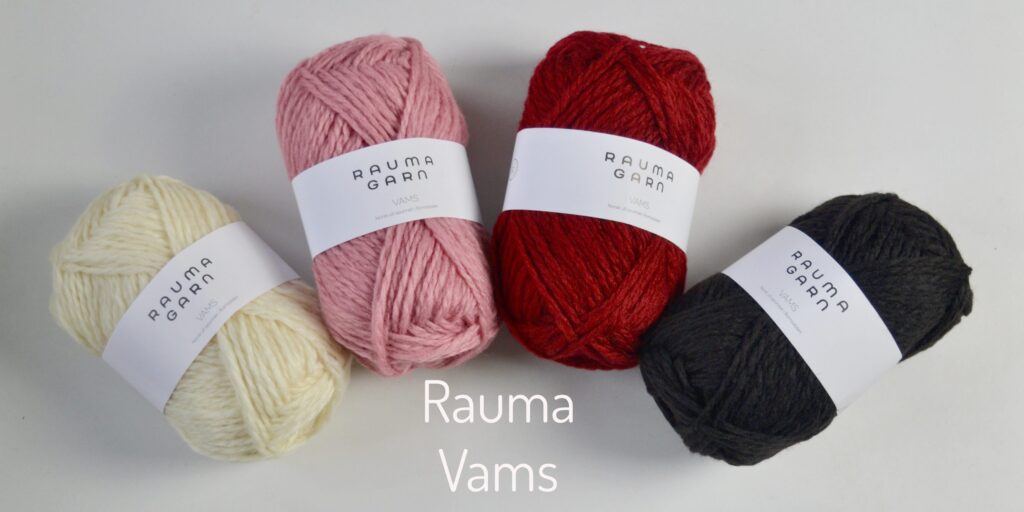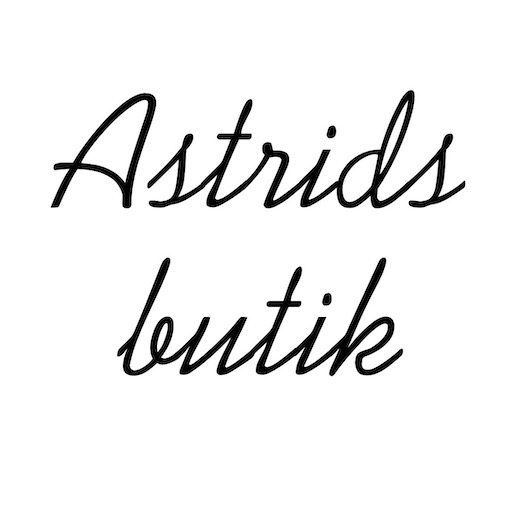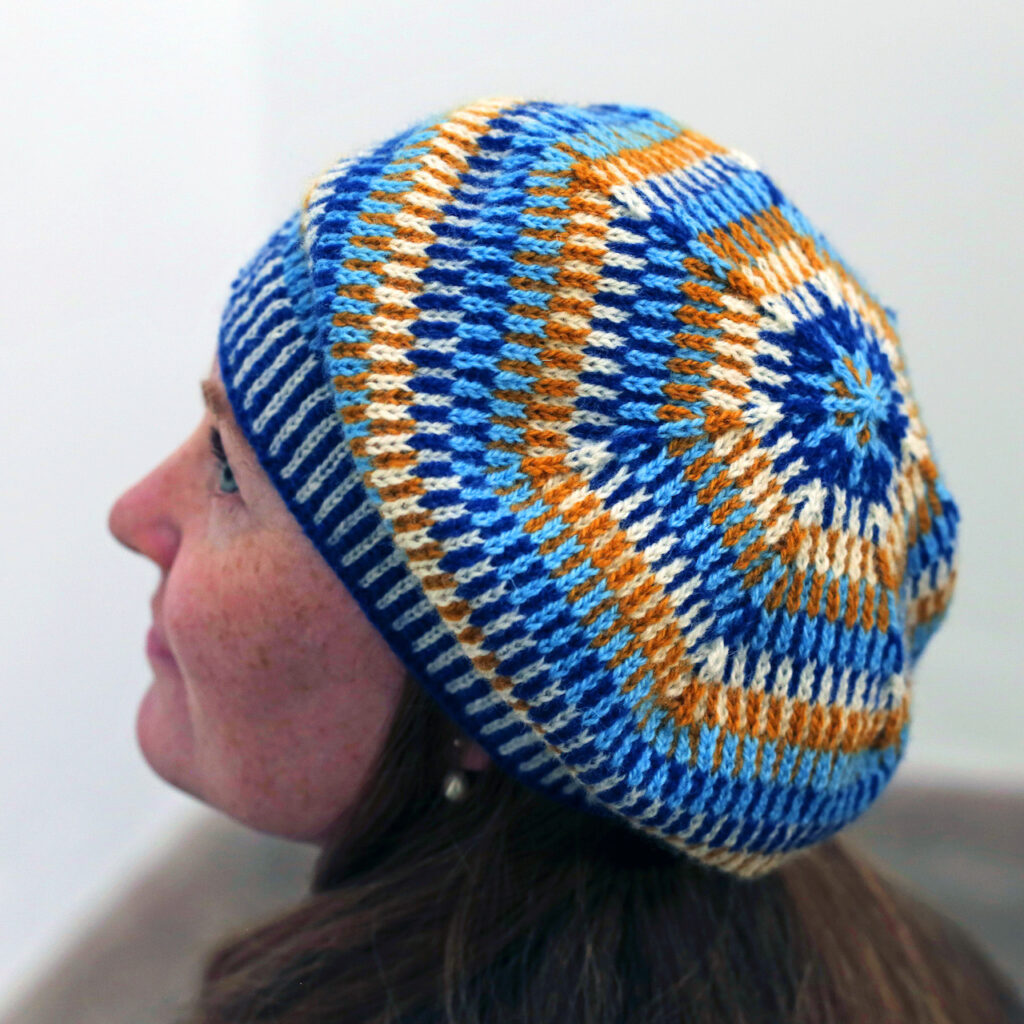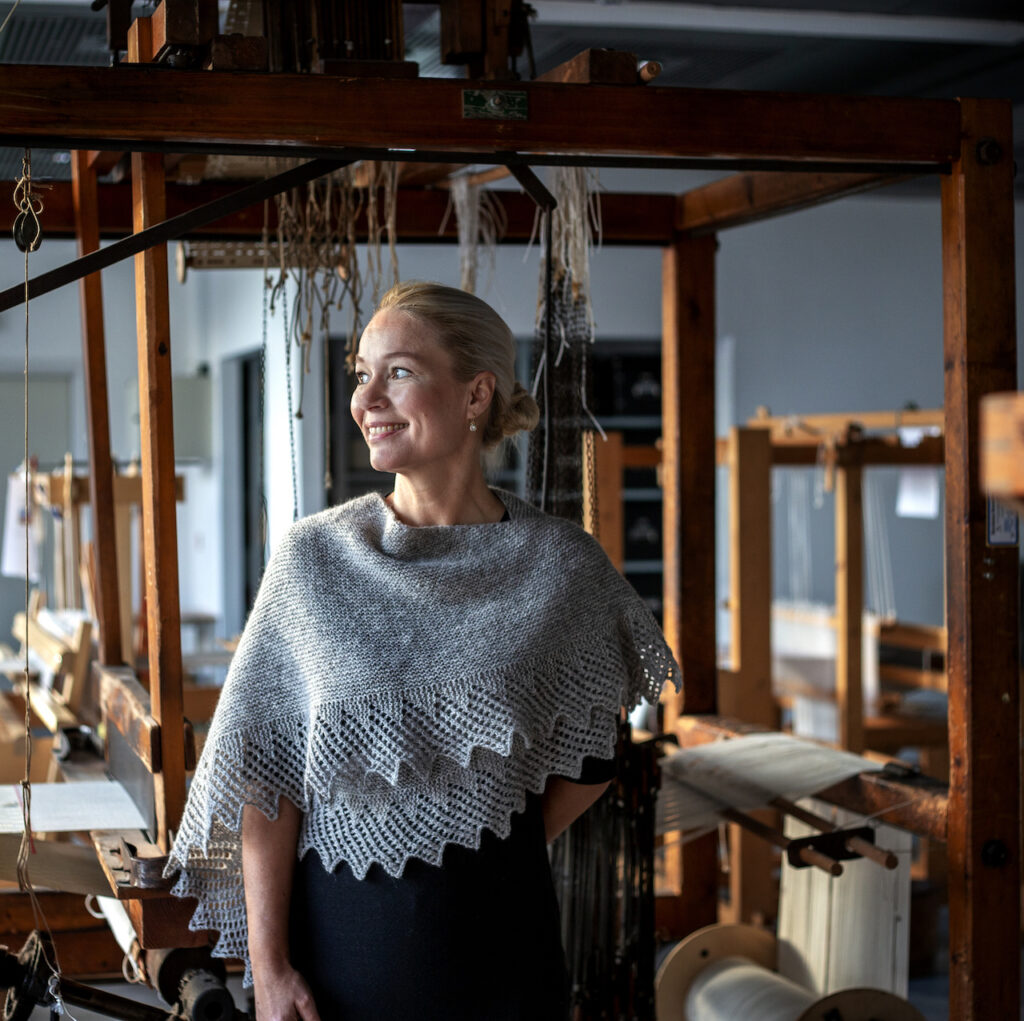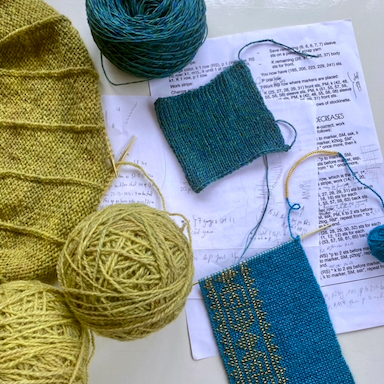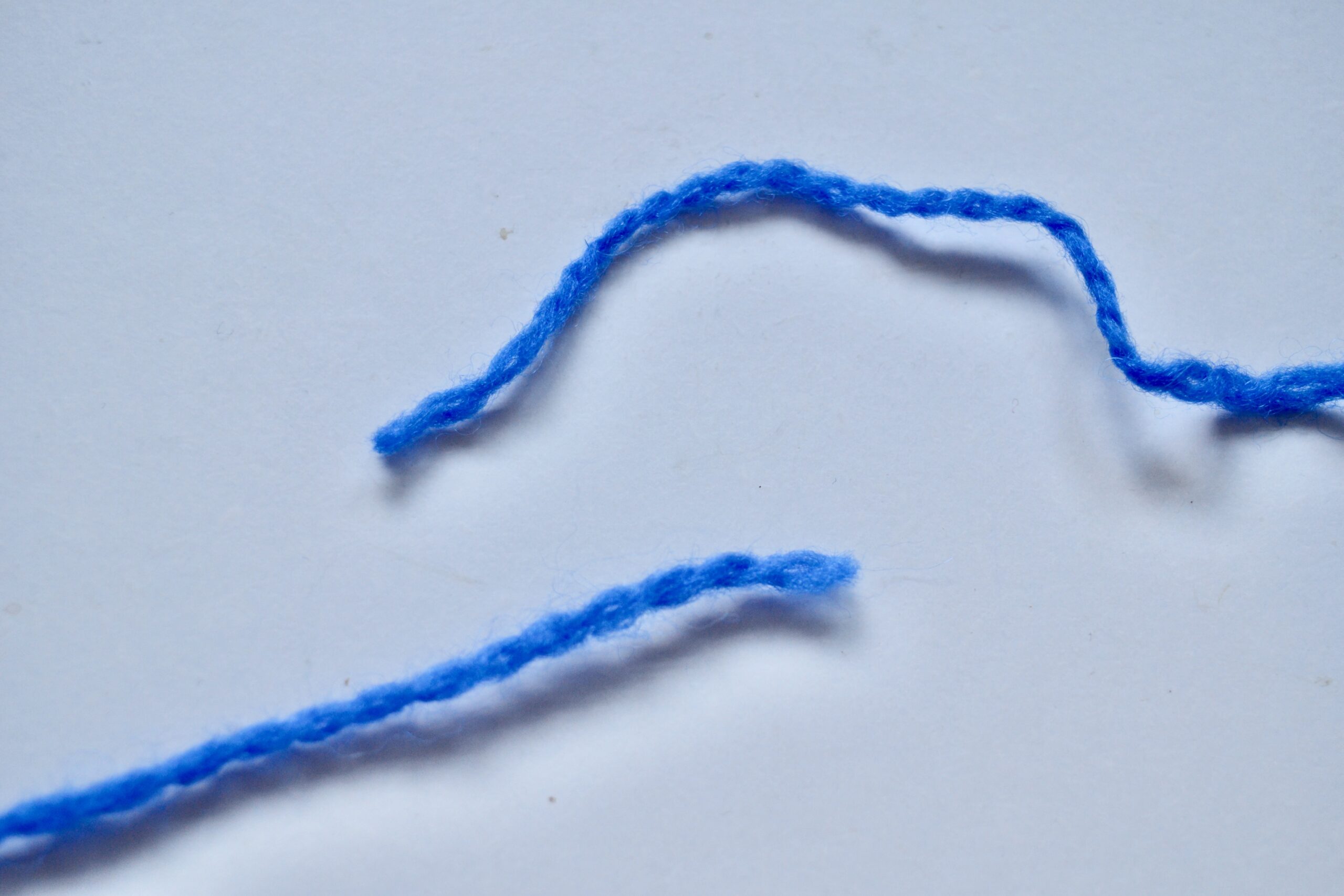
This technique for changing yarn makes life much easier, especially when knitting a thicker yarn where sewn-in ends can be bulky and easily seen.
I am showing how to splice using href=”https://astridsbutik.dk/en/product-category/rauma-en/vams-en/”>Rauma Vams, a thick 2-ply pure wool yarn. It felts really well. Splicing can only be used with pure wool yarns that felt well. It doesn’t work on superwash or fiber blends.
Here are the two ends that I would like to join. The two plies are easily visible:
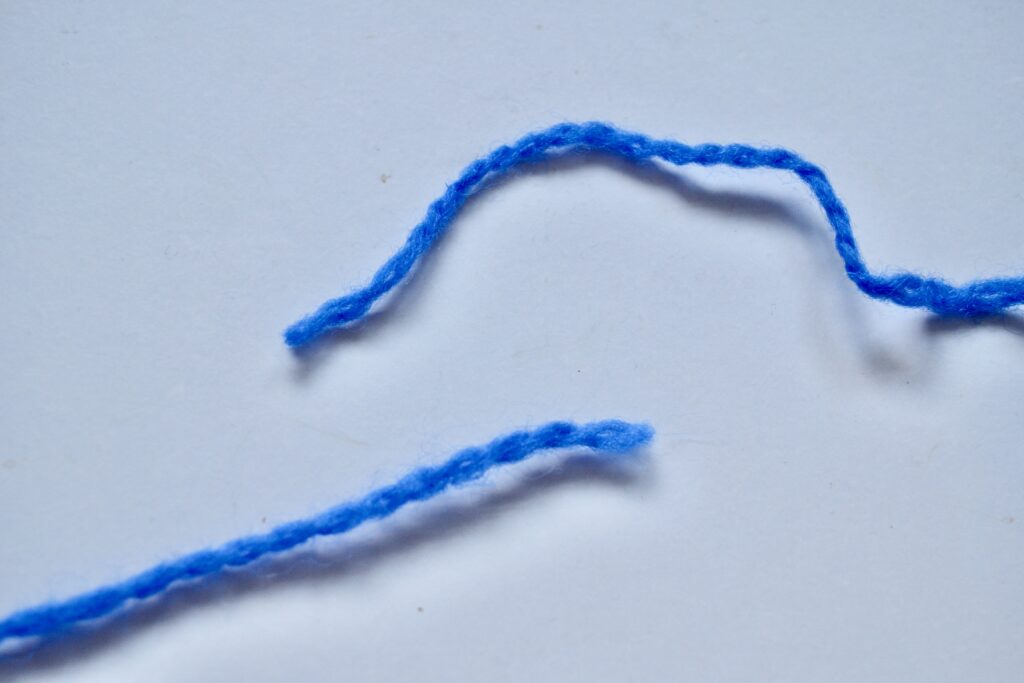
Before splicing, I remove one ply of each end, leaving a 1-ply overhang of 2-3 cm. This means the splice will be the same thickness as the rest of the yarn, and completely invisible after knitting:
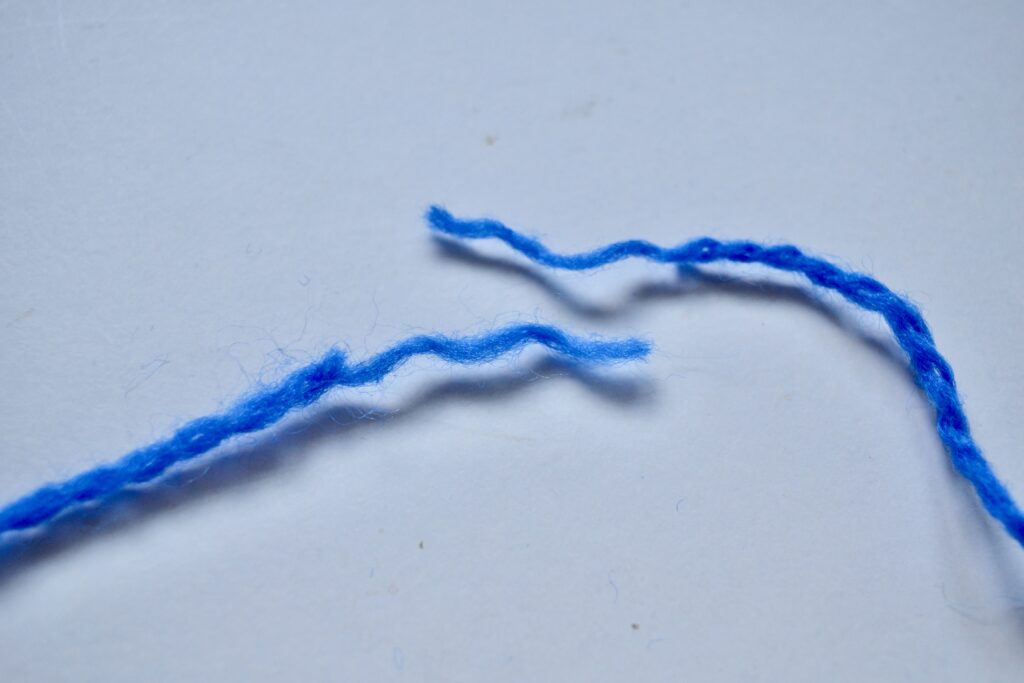
Then, I hold the yarn ends on my palm:
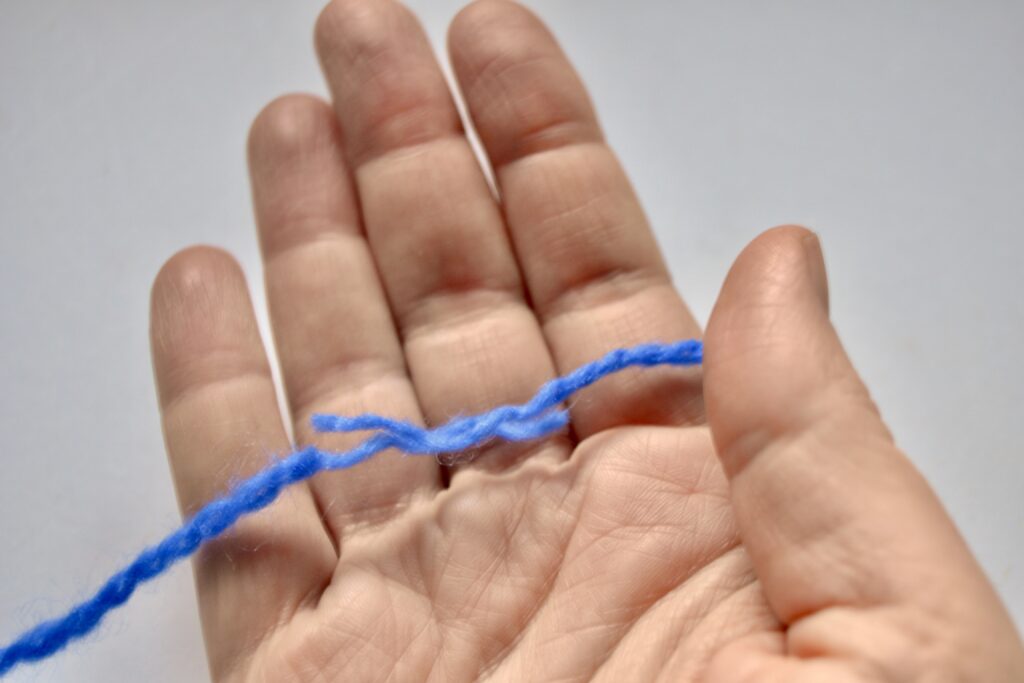
At this point, moisten the overlapping ends. You can dip your fingers in water, or use a bit of spit. The technique is also known as spit splicing, and some will even claim that enzymes in spit help splice the wool. This doesn’t make much sense, as spit doesn’t contain any enzymes that work on proteins as far as I remember! But spit is good because the lazy knitter in the comfy chair doesn’t have to get up.
When the yarn ends are moist, put the other hand on top and roll them using a movement perpendicular to the yarn. It’s fine if it feels warm between the palms, as the combination of moisture and temperature is what makes felting happen! The result:
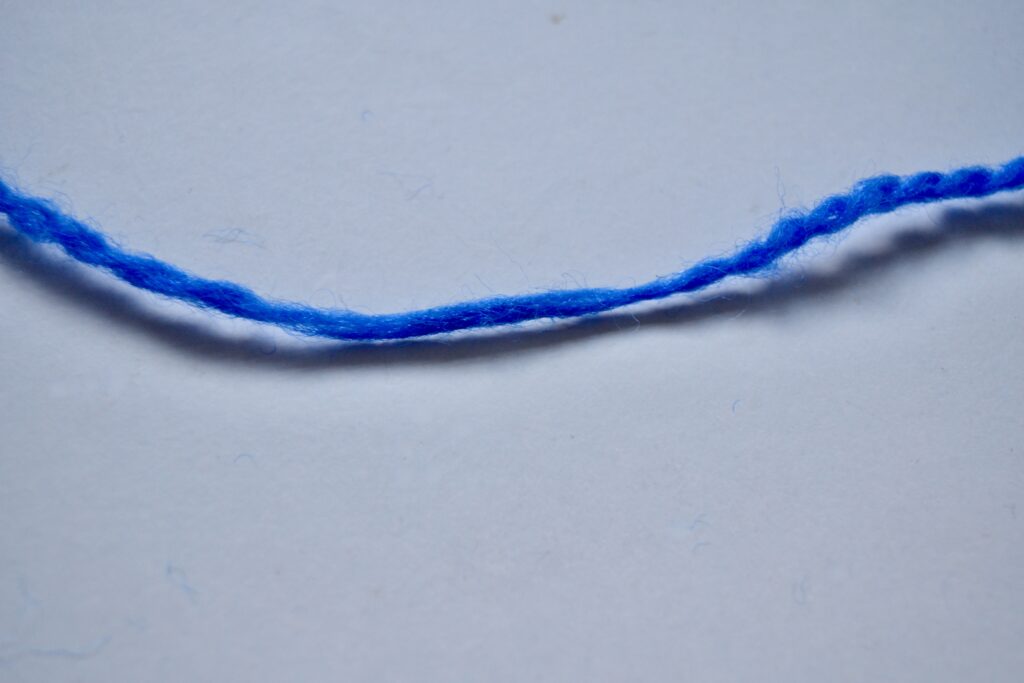
The fibers are felted together, and the the yarn ends have been spliced. I usually give the join a little tug to see if it’s strong enough. If not, felt it some more.
Splicing is a very useful technique when knitting real wool. I imagine that the technique must be very old, older than knitting, probably. Nalbinding, which was the technique used before knitting, is hard to do without splicing, as new ends of yarn are constantly added. And wool yarns of the past would most probably have felted well. Splicing ends would also be an easy idea to come to mind for someone who spun all their own yarn, and thought of wool fibres as a material to be worked as you needed.
See more Rauma Vams?
